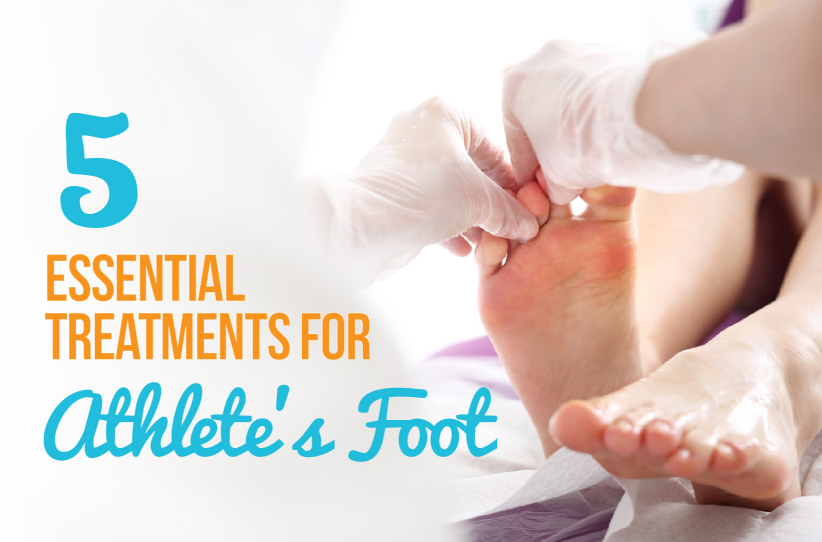

Are you bothered by athlete’s foot? Athlete’s foot (tinea pedis) is caused by a fungal infection of the skin of the foot. Most of them are caused by one of two types of fungi: Trichophyton mentagrophytes and Trichophyton rubrum. If you want to be free from athlete’s foot, here are 5 essential treatments that you can use!
How you treat athlete’s foot (tinea pedis) depends on its type and severity. Most cases of athlete’s foot can be treated at home using an antifungal medicine to eradicate the fungus or slow its growth.

This type of antifungals is usually used first. These comprise of clotrimazole (Lotrimin), miconazole (Micatin), terbinafine (Lamisil), and tolnaftate (Tinactin). Nonprescription antifungals are the ones applied to the skin (topical medicines).

They are used if non-prescription medicines are not successful or if you have complicated infections. Some of these medicines are topical antifungals, which are applied directly to the skin. Examples are butenafine (Mentax), clotrimazole, and naftifine (Naftin). Prescription antifungals can also be orally. Examples of oral antifungals are fluconazole (Diflucan), itraconazole(Sporanox), and terbinafine (Lamisil).

Toe-web (interdigital) infections often appear between the toes, especially between the fourth and fifth toes. This is the most common type of athlete’s foot.

Moccasin-type athlete’s foot can cause flaking and thick skin on the sole and heel of the foot. Often the toenails become infected. A moccasin-type infection is tough to treat, because the skin on the sole of the foot is very thick.

Vesicular infections, or blisters, typically appear on the foot instep but can also grow between the toes, on the sole of the foot, on the top of the foot, or on the heel. This type of fungal infection may be convoyed by a bacterial infection. This is the least common type of infection.
Overweight and obesity are defined as abnormal or excessive fat accumulation that presents a risk to health. A body mass […]
Around 27 million Filipino adults are overweight or obese, according to the latest National Nutrition Survey conducted by the Food […]
Advances in scientific and technological knowledge have provided unprecedented advantages in terms of immeasurable convenience in our daily living, lightning-fast […]